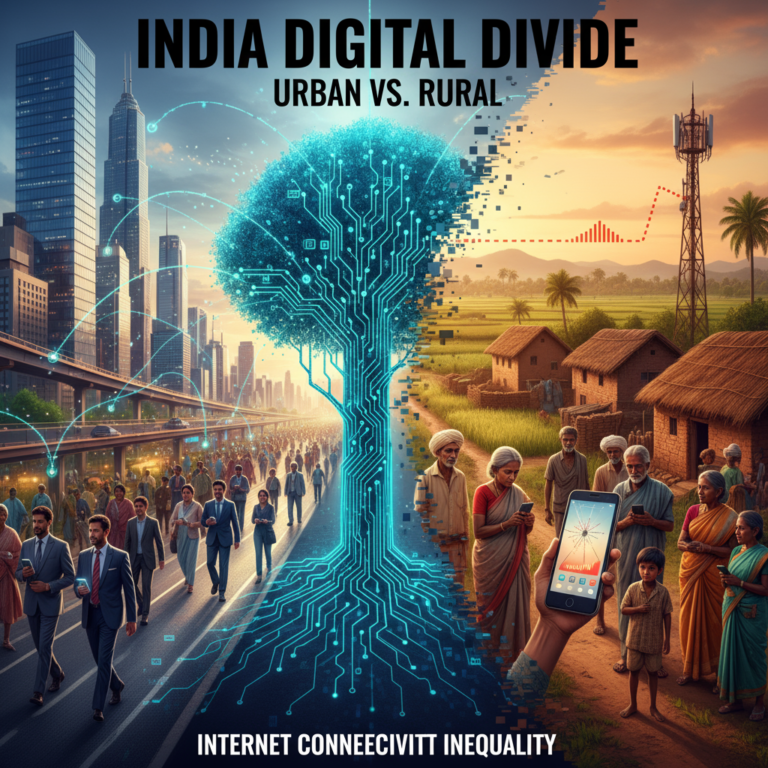Key Highlights
- Supreme Court’s 6:1 majority verdict in 2024 overrules E.V. Chinnaiah (2004) allowing states to sub-classify SC/ST communities based on empirical evidence of varying backwardness
- Four judges advocate creamy layer principle for SC/ST communities despite constitutional distinction from OBCs, creating controversy over economic versus caste-based discrimination
- Constitutional Articles 341/342 grant Presidential notification power while states gain legislative authority for sub-classification without tampering with Central lists
- Telangana becomes first state implementing SC sub-classification with separate quotas demonstrating practical application of new jurisprudential framework
- Empirical data requirement for sub-classification necessitates caste census-like enumeration raising politically sensitive questions about comprehensive data collection
India’s reservation system stands as one of the world’s most comprehensive affirmative action frameworks, designed to address historical injustices and promote substantive equality for marginalized communities. The recent Supreme Court judgment in State of Punjab v. Davinder Singh (2024), delivered by a 7-judge Constitution Bench with a 6:1 majority, has fundamentally altered the reservation landscape by overruling the 2004 E.V. Chinnaiah decision and permitting sub-classification within Scheduled Castes and Scheduled Tribes. This landmark verdict, spanning 565 pages with six separate concurring opinions, not only addresses the heterogeneous nature of reserved categories but also introduces the contentious creamy layer principle for SC/ST communities, marking a paradigmatic shift in India’s approach to social justice and distributive equity. scobserver scconline
Constitutional Architecture of Reservation
Foundational Provisions: Articles 14, 15, and 16
The constitutional framework for reservations rests on the fundamental principles of equality enshrined in Articles 14, 15, and 16, which collectively establish both the right to equality and the state’s power to make special provisions for backward classes.
Article 14 – Equality Before Law:
- Permits reasonable classification based on intelligible differentia and rational nexus
- Recognizes substantive equality over formal equality
- Allows sub-classification within existing classes if they are heterogeneous
- Chief Justice Chandrachud emphasized that “equality does not entail sameness” but requires “parity of treatment under parity of conditions”
Article 15 – Prohibition of Discrimination:
- Article 15(4) empowers the state to make special provisions for socially and educationally backward classes
- Article 15(5) extends reservation to private educational institutions
- Provides the constitutional basis for affirmative action in education and employment
Article 16 – Equality of Opportunity:
- Article 16(4) enables reservation for backward classes in public employment
- Article 16(4A) specifically addresses SC/ST reservation in promotions
- Article 16(4B) allows consequential seniority for promoted SC/ST employees dopt.gov
Presidential Powers: Articles 341 and 342
Articles 341 and 342 vest the President of India with exclusive power to notify SC/ST lists, creating a centralized mechanism for community identification while allowing states legislative power for sub-classification.
Article 341 – Scheduled Castes:
- President’s exclusive power to specify SC lists for each state/UT
- Parliament’s authority to modify the lists through legislation
- States cannot alter the Presidential list but can sub-classify within it
- The 2024 judgment clarifies that sub-classification “does not amount to tinkering” with the Presidential list
Article 342 – Scheduled Tribes:
- Similar framework as Article 341 for ST communities
- Consultation with state governors for initial notification
- Parliamentary procedure for subsequent modifications
- Tribal characteristics and geographical considerations inform the listing process
Institutional Safeguards: Articles 338 and 338A
National Commissions serve as constitutional watchdogs for SC/ST welfare and rights protection:
National Commission for Scheduled Castes (Article 338):
- Constitutional status with quasi-judicial powers
- Investigation and monitoring functions for SC welfare
- Advisory role to government on policy matters
- Annual reporting to President on community status
National Commission for Scheduled Tribes (Article 338A):
- Separate constitutional entity recognizing ST distinct needs
- Parallel functions to NCSC for tribal communities
- Special focus on tribal land rights and cultural preservation
- Coordination mechanism between Centre and states
Historical Evolution of Reservation Jurisprudence
Indra Sawhney (1992): The Foundational Framework
The Indra Sawhney v. Union of India judgment by a 9-judge Constitution Bench established the fundamental principles governing India’s reservation system, creating a jurisprudential foundation that continues to influence contemporary decisions.
Key Indra Sawhney Principles:
- 50% ceiling rule: Overall reservation cannot exceed 50% of total opportunities
- Creamy layer exclusion: Economically advanced OBC members excluded from benefits
- Backward class identification: Social, educational, and economic backwardness as criteria
- No reservation in promotions: Promotional quota not constitutionally mandated
- SC/ST exclusion: Creamy layer principle explicitly not applicable to SC/ST communities
Constitutional Interpretation:
The judgment recognized “backward class of citizens” as a generic term encompassing SC, ST, and OBC, while maintaining distinct treatment for each category based on their specific historical experiences and constitutional provisions.
E.V. Chinnaiah (2004): The Homogeneity Doctrine
The E.V. Chinnaiah v. State of Andhra Pradesh decision by a 5-judge Constitution Bench established the “homogeneous class doctrine” that prohibited sub-classification within SC/ST categories for two decades. cjp
Chinnaiah Holdings:
- SCs form homogeneous class: All SC communities deemed equally backward by virtue of Presidential notification
- No state interference: Sub-classification amounts to tinkering with Presidential list under Article 341
- Article 14 violation: Preferential treatment within SCs creates impermissible micro-classification
- Indra Sawhney distinction: OBC sub-classification permitted but not applicable to SC/ST
Constitutional Reasoning:
The judgment emphasized that Presidential lists under Articles 341/342 create constitutionally recognized classes that states cannot fragment through legislation, maintaining the integral character of SC/ST categories. clrp
Jarnail Singh (2018): Creamy Layer Extension
The Jarnail Singh v. Lachhmi Narain Gupta judgment by a 5-judge Constitution Bench controversially extended the creamy layer principle to SC/ST promotional reservations, overturning established precedent.
Jarnail Singh Innovations:
- Creamy layer for SC/ST: Economically advanced members excluded from promotional benefits
- Data requirement: Quantifiable evidence of backwardness and inadequate representation tscld
- Article 335 compliance: Administrative efficiency considerations in reservation policy
- Judicial oversight: Court’s power to determine creamy layer criteria
The 2024 Paradigm Shift: Davinder Singh Judgment
Overruling Chinnaiah: Heterogeneity Recognition
The 2024 Supreme Court decision in State of Punjab v. Davinder Singh represents a fundamental reconceptualization of SC/ST categories from homogeneous groups to heterogeneous collections requiring differentiated treatment.
Majority Opinion Framework (Chief Justice Chandrachud):
- Historical evidence: Empirical data demonstrates SC/ST communities are not homogeneous
- Constitutional permissibility: Sub-classification allowed under Articles 14, 15, and 16
- State legislative power: Sub-classification does not tamper with Presidential lists
- Judicial review: All sub-classification laws subject to constitutional scrutiny
Limitations and Safeguards:
- No 100% allocation: Complete reservation for sub-groups prohibited
- Empirical basis: Data-driven justification required for sub-classification
- Proportionate representation: All sub-groups must receive adequate opportunity
- Periodic review: Dynamic assessment of representation patterns
Creamy Layer Controversy: Judicial Overreach?
Four of the seven judges in the 2024 judgment advocated applying creamy layer exclusion to SC/ST communities, generating significant controversy and criticism from social justice advocates.
Justice Gavai’s Creamy Layer Argument:
- Different criteria: SC/ST creamy layer distinct from OBC parameters
- Constitutional mandate: Article 16(1) requires genuine backward class identification
- Resource optimization: Benefits reaching truly disadvantaged members
- Precedential support: Jarnail Singh judgment established the principle
Critical Perspectives:
Retired Judge Anil Vaidya and other legal scholars argue that creamy layer application to SC/ST communities contradicts Dr. Ambedkar’s constitutional vision and the unique nature of caste-based discrimination, which differs fundamentally from economic backwardness.
Federalism and State Policy Space
Centre-State Dynamics in Reservation Policy
The 2024 judgment significantly enhances state power in reservation policy while maintaining Central control over community identification:
State Powers Enhanced:
- Sub-classification authority: Internal quota design within reserved categories
- Policy experimentation: Different approaches based on local conditions
- Democratic accountability: State-level political processes determining sub-group treatment
- Administrative flexibility: Implementation strategies adapted to regional needs
Central Authority Retained:
- Community identification: Presidential notification of SC/ST lists remains exclusive
- Constitutional oversight: Supreme Court review of state policies
- National standards: Fundamental principles applicable across states
- Inter-state mobility: Uniform recognition of reserved category status
Implementation Challenges: Telangana’s Pioneer Approach
Telangana became the first state to implement SC sub-classification following the 2024 judgment, creating separate quotas within its 15% SC reservation:
Telangana Model:
- Sub-group A: Mala, Madiga, Relli, and other specified castes
- Sub-group B: Madiga community with separate allocation
- Sub-group C: Remaining SC communities
- Sub-group D: New entrants and converts
Social Justice versus Merit Debate
Fragmentation Concerns
Critics argue that sub-classification creates fragmentation within already marginalized communities, potentially weakening collective solidarity and political mobilization:
Fragmentation Arguments:
- “Divide within the oppressed”: Inter-caste competition replacing collective struggle
- Political manipulation: Electoral calculations driving sub-classification decisions
- Resource dilution: Limited opportunities creating zero-sum competition
- Identity reinforcement: Caste hierarchies strengthened rather than dismantled
Equity and Targeted Justice
Supporters contend that sub-classification enhances equity by ensuring benefits reach the most disadvantaged within reserved categories:
Equity Arguments:
- Empirical evidence: Data shows disproportionate benefit capture by dominant SC/ST groups
- Constitutional mandate: Substantive equality requires differentiated treatment
- Resource optimization: Targeted intervention more effective than blanket policies
- Democratic legitimacy: State governments accountable to affected communities
Implementation Challenges and Data Requirements
Caste Census and Empirical Foundation
Effective sub-classification requires comprehensive data collection, raising the politically sensitive issue of caste census:
Data Requirements:
- Population proportions: Demographic distribution of sub-groups within SC/ST categories
- Representation analysis: Employment and education participation rates
- Socio-economic indicators: Income, assets, and occupation patterns
- Historical trends: Long-term participation patterns in reserved opportunities
Political Sensitivities:
- Caste census debate: National-level resistance to detailed caste enumeration
- Privacy concerns: Individual and community data protection issues
- Political implications: Electoral calculations influencing data collection and usage
- Administrative capacity: State machinery capability for comprehensive data gathering
Criteria Development and Litigation Risk
Determining “more backward” sub-groups requires clear, defensible criteria to minimize legal challenges:
Potential Criteria:
- Socio-educational indicators: Literacy rates, educational attainment, professional representation
- Economic parameters: Income levels, asset ownership, occupational patterns
- Political representation: Participation in elected bodies and leadership positions
- Historical discrimination: Documented evidence of specific disadvantages
Comparative Global Perspectives
International Affirmative Action Models
India’s sub-classification approach is unique globally, as most countries with affirmative action programs maintain broader categorical classifications:
United States Model:
- Race-based affirmative action without internal sub-classification
- Recent Supreme Court decisions restricting race-conscious admissions
- Socio-economic factors increasingly important in policy design
- Individual rather than group focus in implementation
South African Approach:
- Post-apartheid redress through broad racial categories
- Employment equity and Black Economic Empowerment programs
- No sub-classification within previously disadvantaged groups
- Sunset clauses and periodic review mechanisms
Brazilian Experience:
- Racial quotas in higher education and public employment
- Self-identification rather than administrative classification
- Social mobility and educational outcomes as success measures
- Controversy over effectiveness and social impacts
Ethical Dimensions and Philosophical Debates
Equality versus Equity Paradigm
The sub-classification debate reflects deeper philosophical tensions between formal equality and substantive equity:
Formal Equality Perspective:
- Equal treatment for all members of recognized backward classes
- Non-discrimination within constitutionally identified groups
- Uniform application of reservation benefits across categories
- Legal consistency and predictable policy frameworks
Substantive Equity Approach:
- Differentiated treatment based on actual disadvantage levels
- Targeted intervention for most marginalized sub-groups
- Outcomes-focused rather than process-oriented policies
- Adaptive strategies responding to empirical evidence
Balancing Justice Claims
The ethical challenge lies in balancing competing justice claims within marginalized communities:
Distributive Justice Questions:
- Resource allocation among differently situated but similarly backward groups
- Historical injustice versus contemporary disadvantage in benefit distribution
- Individual merit versus group representation in opportunity allocation
- Intergenerational equity in affirmative action design and implementation
Way Forward: Building Inclusive Framework
National Policy Framework Development
Creating a coherent national framework for sub-classification requires multi-stakeholder consultation and evidence-based policy design:
Framework Elements:
- Standardized criteria: Uniform parameters for assessing relative backwardness
- Data collection protocols: Systematic information gathering mechanisms across states
- Review mechanisms: Periodic assessment of policy effectiveness and community progress
- Inter-state coordination: Common standards while allowing local flexibility
Strengthening Empirical Research
Robust research infrastructure is essential for informed policy decisions on sub-classification:
Research Priorities:
- Longitudinal studies: Long-term impact assessment of reservation policies
- Comparative analysis: Cross-state comparison of different approaches
- Socio-economic surveys: Detailed community profiles and progress indicators
- Policy evaluation: Cost-benefit analysis of various intervention models
Democratic Deliberation and Consensus Building
Sustainable sub-classification policies require broad social consensus and democratic legitimacy:
Consultation Processes:
- Community dialogues: Affected group participation in policy formulation
- Expert committees: Technical expertise informing political decisions
- Parliamentary debate: Legislative scrutiny of sub-classification proposals
- Civil society engagement: Academic and activist input in policy design
Conclusion: Navigating Complex Terrain
The 2024 Supreme Court judgment on SC/ST sub-classification opens new possibilities for targeted social justice while creating complex implementation challenges. The tension between unity and differentiation within marginalized communities reflects broader questions about the evolution of India’s affirmative action system in a changing social landscape.
Success in implementing sub-classification will depend on careful balance between empirical rigor and political sensitivity, constitutional principles and practical needs, individual advancement and community solidarity. The journey from Chinnaiah to Davinder Singh represents not just legal evolution but a maturing understanding of how formal equality must adapt to serve substantive justice goals.
As states begin implementing sub-classification policies, the true test will be whether these new frameworks enhance social justice without fragmenting collective solidarity among India’s historically marginalized communities. The ongoing debate about creamy layer application to SC/ST categories will likely require further judicial clarification and social consensus to resolve fundamental questions about the nature and purpose of affirmative action in contemporary India.
Mains Questions
- “Quota within quota is essential to achieve real equity in India’s reservation system.” Critically examine in the light of recent Supreme Court verdict. (GS2)
- Discuss the constitutional and federal implications of empowering states to sub-classify within Scheduled Castes. (GS2)
- Reservations alone cannot ensure social justice in India. Evaluate alternative measures to empower marginalized communities. (GS2/GS3)









+ There are no comments
Add yours